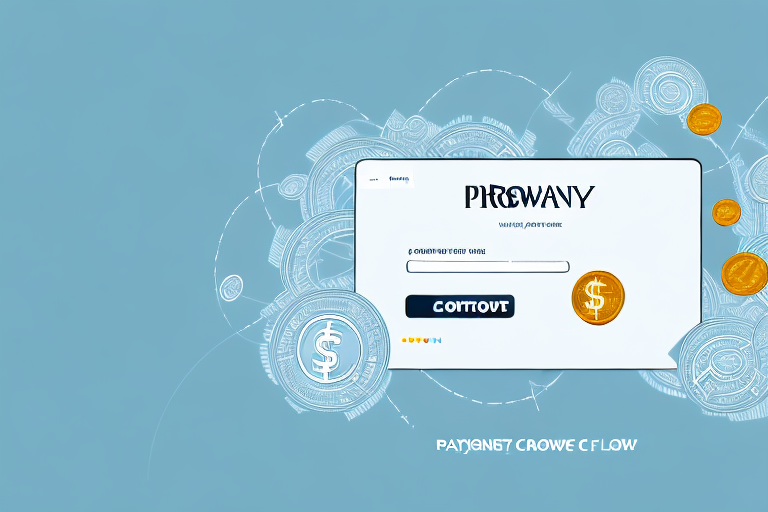Setting Up and Managing Payment Gateways: A Comprehensive Guide
In today's digital age, online payments are rapidly becoming the norm for businesses of all sizes. Payment gateways are a crucial component of this process, serving as a secure bridge between customers, merchants, and financial institutions. This comprehensive guide will cover everything you need to know to effectively set up and manage payment gateways for your business.
Understanding Payment Gateways: Function and Mechanism
What is a Payment Gateway?
A payment gateway is an e-commerce service that authorizes payments for online transactions. It acts as a bridge between the customer's payment method (e.g., credit card, debit card) and the merchant's bank account. Once the payment is authorized, the funds are typically transferred to the merchant's account within a few days. Payment gateways utilize encryption technology to ensure that sensitive payment information is securely transmitted between all parties involved in the transaction.
Types of Payment Gateways
- Hosted Payment Gateways: Redirect customers to a third-party website to complete the payment process. Examples include PayPal and Stripe Checkout.
- Integrated Payment Gateways: Allow customers to complete the payment process without leaving the merchant's website, providing a seamless user experience.
- Self-Hosted Payment Gateways: Require the merchant to host the payment page on their own website, offering greater control over the payment process.
Each type of payment gateway has its own advantages and disadvantages, and the choice depends on the specific needs of the merchant.
Benefits of Using Payment Gateways for Your Business
Enhanced Security
Payment gateways offer robust fraud protection features that help prevent chargebacks and other types of payment fraud. According to a PCI Security Standards Council, implementing secure payment gateways significantly reduces the risk of data breaches and fraud.
Convenience and Flexibility
Payment gateways support a wide range of payment options, including credit cards, debit cards, and mobile payments, providing customers with flexibility and convenience. This variety can lead to higher conversion rates as customers can choose their preferred payment method.
Operational Efficiency
By automating payment processing, payment gateways reduce the need for manual data entry, saving time and resources. Additionally, they provide detailed transaction reports, offering valuable insights into your business's financial performance. This data-driven approach can help you make informed decisions and identify areas for improvement.
Choosing the Right Payment Gateway for Your Business
Security Features
Ensure that the payment gateway provider complies with industry security standards such as PCI DSS. Features like 3D Secure authentication and tokenization can enhance the security of transactions.
Cost Considerations
Evaluate the fee structure of different payment gateways, including transaction fees, setup fees, monthly fees, and chargeback fees. For instance, according to a Statista report, transaction fees can vary significantly between providers, impacting your overall costs.
Customer Support and Payment Options
Choose a payment gateway that offers 24/7 customer support to assist with any issues that may arise. Additionally, consider the range of payment options supported to ensure they align with your customers' preferences.
Setting Up and Integrating a Payment Gateway
Creating an Account
Start by creating an account with your chosen payment gateway provider. This process typically involves providing business details, verifying your identity, and linking your bank account.
Integration Steps
Follow the provider’s instructions to integrate the payment gateway with your website or e-commerce platform. This may involve installing a plugin, using an API integration, or setting up a redirect to a hosted payment page. For detailed integration guides, refer to the provider’s official documentation.
Testing the Payment Gateway
Before going live, thoroughly test the payment gateway to ensure that transactions are processed correctly. Most providers offer a sandbox environment for testing purposes.
Managing and Maintaining Payment Gateways
Regular Updates and Monitoring
Keep your payment gateway software and plugins updated with the latest security patches. Regularly monitor transactions for any unusual activity to quickly address potential issues.
Transaction Data Analysis
Analyze transaction data to identify patterns or trends, such as high chargeback rates or frequent errors. Tools like Tableau can help visualize this data for better decision-making.
Compliance and Security Standards
Ensure ongoing compliance with relevant regulations and standards, such as PCI DSS. Conduct regular audits and implement necessary security measures to protect sensitive payment data.
Common Payment Gateway Issues and Solutions
- Authorization Failures: Verify that the customer's payment information is correct and that their bank has sufficient funds. Contact your payment gateway provider for further assistance if needed.
- Payment Declines: Inform customers of the decline and offer alternative payment methods. Ensure that your payment gateway supports multiple payment options.
- Transaction Errors: Regularly monitor and address any system errors. Utilize error logs provided by the payment gateway to troubleshoot issues effectively.
Ensuring the Security of Your Customers' Payment Data
Protecting your customers' payment data is paramount. Choose a payment gateway provider that is registered with the Payment Card Industry Security Standards Council (PCI SSC) and complies with their data security standards. Implement additional fraud protection measures such as 3D Secure authentication and tokenization to enhance security.
The Future of Payment Gateways: Trends and Innovations
Payment gateways are continuously evolving to meet the needs of businesses and consumers. Key trends include:
- Biometric Authentication: Using fingerprints or facial recognition to secure transactions.
- Digital Wallets and Mobile Payments: Increasing adoption of services like Apple Pay and Google Wallet.
- Artificial Intelligence and Machine Learning: Enhancing fraud detection and providing personalized payment experiences.
Staying informed about these trends will help you adapt your payment strategies to stay competitive in the market.
Conclusion
Setting up and managing payment gateways may seem daunting at first, but with the right tools and guidance, it can be a streamlined process that enhances the overall customer experience. By following this comprehensive guide, you'll be well-equipped to choose the right payment gateway for your business needs, integrate it with your platform or website, and maintain it for optimal performance.






















